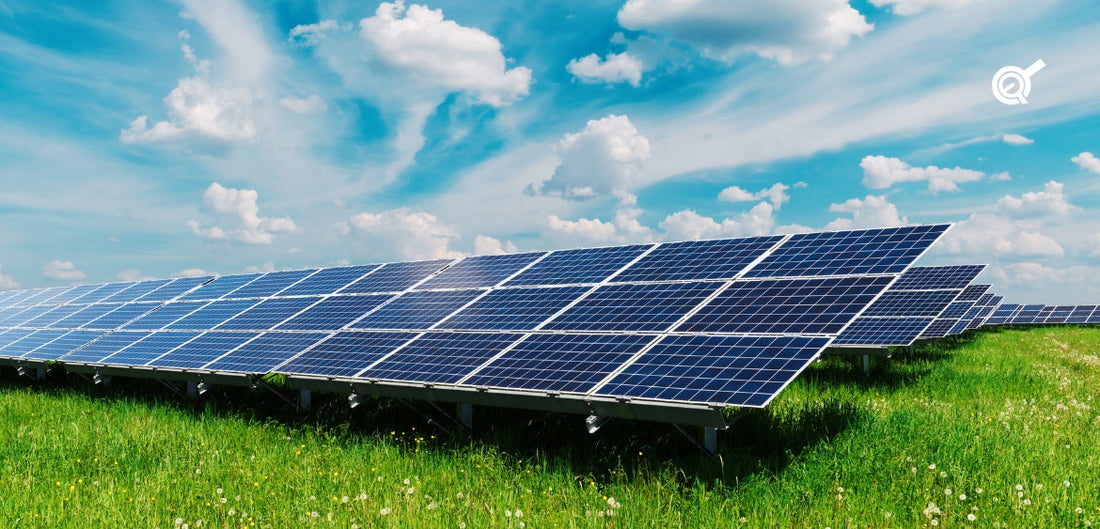In an era where renewable energy becomes not just a choice but a necessity, the innovation in solar technology stands at the forefront of this green revolution. Among the advancements, linear actuators for solar tracking have emerged as game changers. These mechanisms enable solar panels to move in harmony with the sun’s path, drastically increasing the efficiency of solar energy systems. This article delves deep into the world of actuator-powered solar panels, highlighting how they can optimize solar energy generation and why they're pivotal in the renewable energy landscape.

Benefits of Actuator-Enhanced Solar Tracking
The introduction of solar panel tracking technology has marked a significant milestone in our quest for renewable energy efficiency. By utilizing linear actuators, these tracking systems dynamically adjust the position of solar panels throughout the day, ensuring optimal alignment with the sun.
Increased Energy Capture
It will not be an overstatement that actuator-enhanced solar tracking systems revolutionize the way solar panels absorb sunlight. Traditional, stationary solar panels often miss out on peak sunlight hours when the sun’s position changes. However, with solar trackers, panels can tilt and pivot, capturing sunlight more directly and for extended periods. This constant, direct exposure increases the panels' ability to generate power, often resulting in a significant uptick in energy production compared to stationary setups.
Efficiency in Various Weather Conditions
Weather variability poses a challenge to consistent solar energy production, but linear actuators empower solar tracker systems to adapt swiftly. For instance, on overcast days, the system can adjust the panels to capture the maximum available sunlight, which wouldn't be possible with fixed installations. During winter months, when the sun’s trajectory is lower, the system tilts the panels accordingly, maintaining energy production efficiency despite shorter days and lower sun angles.

Choosing the Right Actuators for Your Solar Panels
The cornerstone of an effective solar tracker system is the selection of the right linear actuators. This decision is crucial as it affects not just the efficiency but the durability of the solar tracking system.
Actuator Types and Specifications
The market offers a variety of actuator types, each with its own set of specifications tailored to different applications. Electric actuators are popular for solar energy optimization due to their precise control and easy integration with solar systems. These actuators come with various specifications, such as speed, load capacity, and stroke length, allowing for a customizable approach to meet the specific needs of any solar tracker system. The key is to balance these specifications with your system's requirements to ensure maximum efficiency and reliability.
Customizing for Wind Resistance
Wind poses a significant challenge to solar tracker systems, especially in open, exposed areas. Here, the choice of actuators with adequate wind resistance becomes paramount. Actuators need to be robust enough to withstand high winds without compromising the system’s positioning or structural integrity. Advanced systems incorporate sensors that adjust the tilt of the panels to reduce wind load, ensuring continuous operation even in adverse weather conditions. This customization is vital for maintaining consistent energy production and extending the lifespan of the solar tracking system.

Setting Up Your Solar Tracking System
The transition to a solar tracking system is a step towards maximizing the potential of solar installations. While the idea may seem daunting, the setup process is straightforward with the right components and guidance. For those interested in a DIY solar tracking project, our engineers recommend using our PA-17 linear actuators with 2000 lbs of force. This will allow for holding the solar panels as well as accommodate for wind resistance pressure being applied to the panels. However, just out the abundance of caution, we also suggest that you install additional mounting or safety measures if an area is known for strong winds. To reduce the cost further, you are able to manually control your actuators instead of a solar tracking system by using one of our PA-30 control boxes. We can customize our control box to control two PA-17 actuators individually. Feel free to contact us regarding any of these options.
Products
2 x Linear Actuators (PA-17 model).
- Stroke: 6" to 24" depending on where you mount and lift height required.
- Force: each actuator should be 1600lbs - 2000lbs (to account for the solar panels and wind resistance).
4 x Mounting Brackets (BRK-17 model).
The above products were recommended based on our experience. Different products and control options can be used.
FAQ
Why use linear actuators for solar tracking?
Linear actuators bring precision and efficiency to solar tracking systems. They allow for smooth, controlled movements that enable solar panels to align perfectly with the sun's path, maximizing sunlight absorption and energy production.
How do actuators improve solar panel efficiency?
By enabling dynamic movement, actuators ensure that solar panels remain in the optimal position to capture sunlight throughout the day. This direct exposure increases the panels' power output significantly, making the solar system more efficient.
What's involved in setting up an actuator-powered solar tracker?
Setting up involves selecting suitable actuators, attaching them to the solar panels, and connecting the system to a control unit. The control unit uses data on the sun’s position to adjust the panels’ angles, maximizing energy capture.
Wrapping Up
In wrapping up, the integration of linear actuators into solar panel tracking systems signifies a monumental leap towards enhancing solar energy optimization. Using linear actuators makes it possible to move your solar panels in almost any direction and will significantly reduce your energy bill over non-moving solar panels in your home!
Don’t hesitate to contact us in case of any product-related questions for your solar tracking project. We will be happy to help you!




